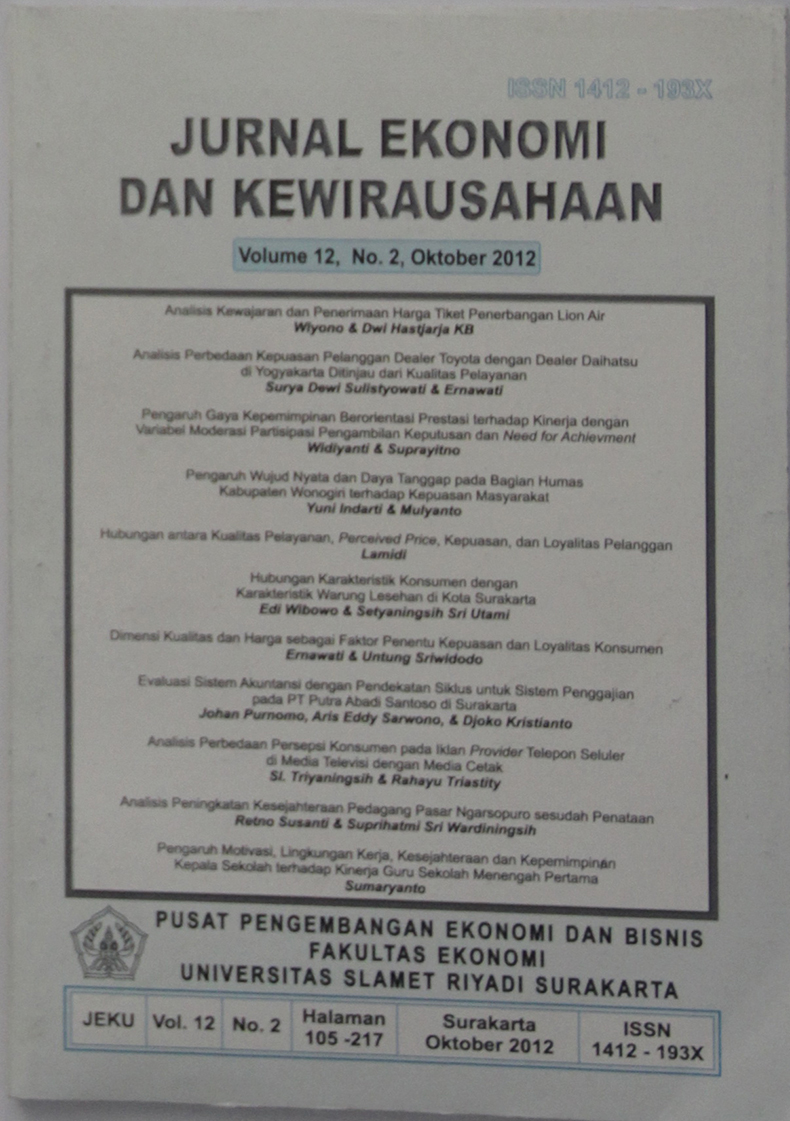ANALISIS PERBEDAAN PERSEPSI KONSUMEN PADA IKLAN PROVIDER TELEPON SELULER DI MEDIA TELEVISI DENGAN MEDIA CETAK
Abstract
ABSTRACT
The approach of this study using survey methods to students, faculty and staff of the Faculty of Economics, University of Slamet Riyadi Surakarta. The population in this study were all students, faculty and staff of the Faculty of Economics, University Slamet Riyadi Surakarta in 2012, convenience sampling technique using random sampling, the samples used by 100 respondents, consisting of as many as 11 people faculty, employees 4 people, and students as many as 85 people. Test data using the instrument validity and reliability. Engineering analysis using normality test and the test independent sample t-test. The results of the analysis can be concluded that: View of the message obtained, message formats, message source is obtained, and message structure obtained is p-value < 0.05 thus Ho is rejected, there is a significant difference consumer perceptions on advertising mobile phone provider in the medium of television to print media seen from the contents of the message, message formats, message source is obtained, and message structure obtained. Based on the analysis it can be concluded that consumers perceive mobile phone provider advertising through television media is better than a cell phone provider advertising through print media.
Keywords: Perception of Consumers, Advertising Media Television and Print Media Advertising
Downloads
Published
Issue
Section
License
Authors who publish this journal agree to the following terms:
- Authors retain copyright and grant the journal right of first publication with the work simultaneously licensed under a Creative Commons Attribution License that allows others to share the work with an acknowledgement of the work's authorship and initial publication in this journal.
- Authors can separately make additional contractual arrangements for non-exclusive distribution published by the journal (e.g., publish it in a book), with an acknowledgement of its initial publication in this journal.
- Authors are allowed and encouraged to send their work via online (e.g., in the institutional repositories or their website) after published by the journal.









